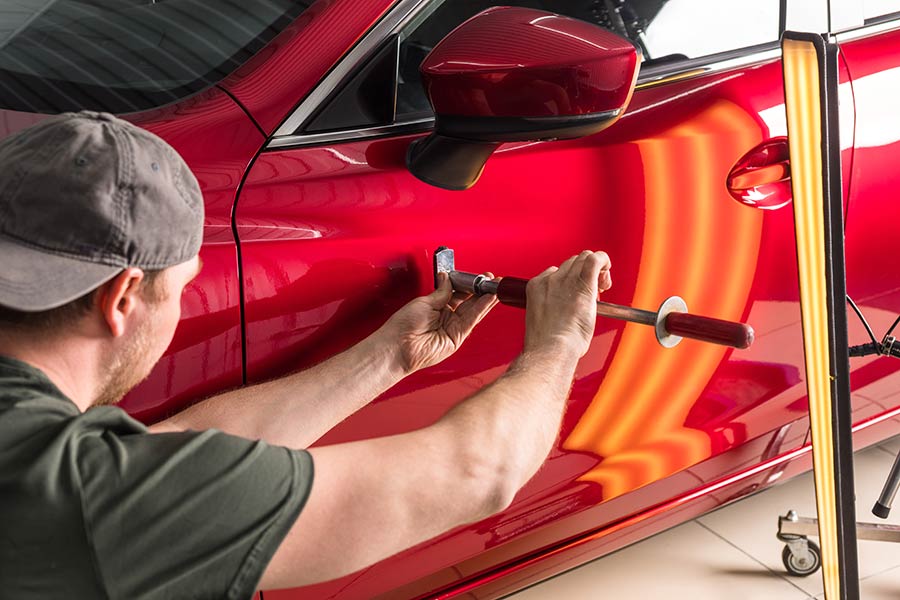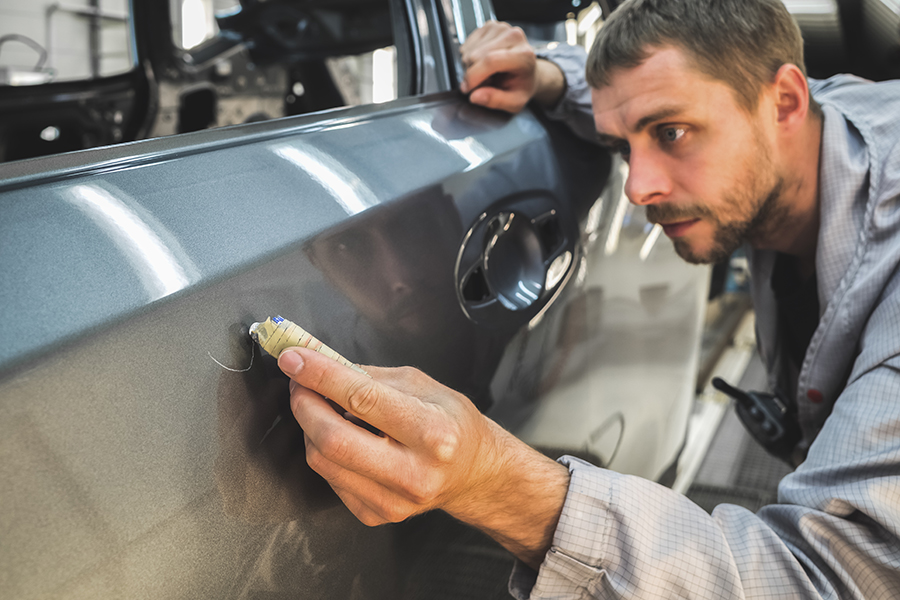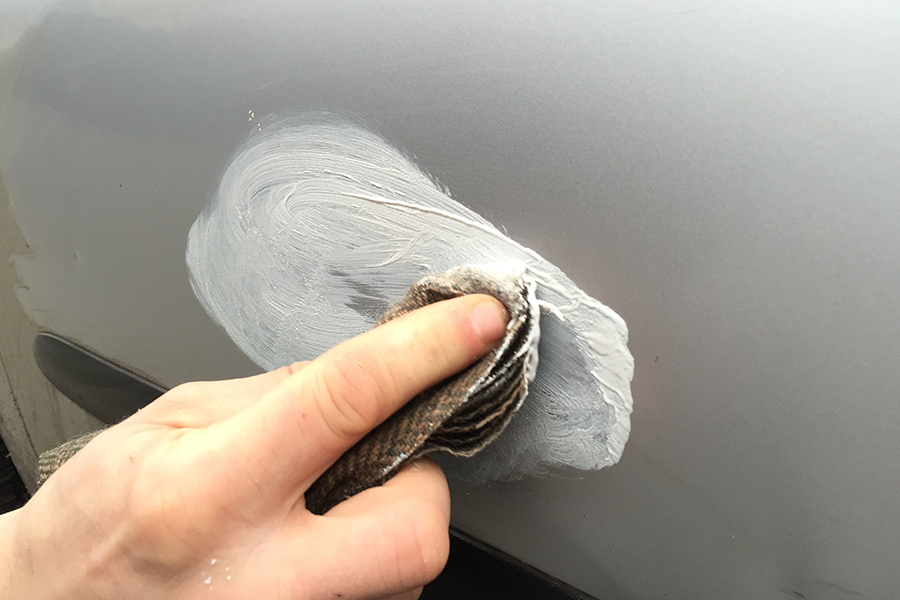Ever had a ding or dent in your car and thought it was the end of the world? Well, paintless dent removal (PDR) is like a magic wand for those unsightly blemishes. This nifty technique fixes dents without messing with your car's paint job, saving you time and money. It's all about getting your ride looking sharp again without the drama of traditional bodywork. Whether it’s a parking lot mishap or hail damage, PDR could be your car’s superhero. Dive into the world of paintless dent removal and see how it can bring back that showroom shine to your vehicle.
Key Takeaways
-
Paintless Dent Removal (PDR) is a cost-effective and efficient method for fixing dents without damaging the vehicle's original paint job.
-
It offers significant benefits including preserving the car's value, being eco-friendly by avoiding the use of fillers and paints, and saving time compared to traditional repair methods.
-
Following a step-by-step guide can help car owners or technicians effectively apply PDR techniques, ensuring high-quality results.
-
Mastering PDR techniques requires practice but can lead to maintaining the vehicle's aesthetic appeal and structural integrity without invasive procedures.
-
By choosing PDR, car owners contribute to environmental conservation efforts by minimizing the use of harmful chemicals typically involved in bodywork repairs.
-
Maintaining your vehicle's value is easier with PDR, as it keeps the original paint intact, which is a critical factor during resale or trade-ins.
PDR Fundamentals
Efficiency Explained
Paintless dent removal, or PDR, drastically speeds up repair times. Unlike traditional methods, it requires no waiting for paint to dry or body filler to harden. This means cars are back on the road faster. The process is streamlined, focusing solely on the dent. This avoids lengthy paint jobs and bodywork.
PDR offers minimal downtime for vehicles. Owners appreciate getting their cars back sooner. This efficiency makes PDR a popular choice.
Techniques Overview
The core idea behind PDR is simple: push metal back into place without harming the paint. Technicians use various techniques, like pushing from behind the dent or tapping it from the front. Each technique requires a high skill level to ensure the paint remains unscathed.
Tools Required
Hand Tools
A range of hand tools supports PDR efforts. Rods and hammers are among them. Selecting the right tool for each dent is crucial. These tools gently massage the metal back into shape without damaging it.
Lighting Solutions
Specialized lighting plays a key role in PDR. It helps technicians spot the exact depth and location of dents. Both LED and fluorescent lights are used for this purpose. Proper lighting ensures a flawless finish by making every detail visible.
Safety Precautions
Safety is paramount in PDR work. Technicians must wear gloves and eyewear to protect themselves. Using tools incorrectly can pose risks. A safe work environment prevents accidents and ensures everyone's well-being.
Benefits of PDR
Cost Savings
Paintless dent removal (PDR) stands out for its cost-effectiveness. It avoids the high expenses of traditional body repairs. Materials like paint and filler are not needed, which cuts down costs significantly. Over time, this method offers long-term financial benefits by preserving the vehicle's value.
Preserving Car Value
Keeping a car's original paintwork is crucial for its resale value. PDR helps in this aspect by maintaining the factory finish. It prevents the depreciation that usually comes with repainting jobs. This way, the car holds onto its value better because the original paintwork remains untouched.
Environmental Advantages
PDR is also a friend to the environment. It reduces the use of chemicals such as paint and filler. This makes it a greener option compared to traditional repair methods. Less waste is produced, and there's a significant decrease in energy consumption since paint drying lamps aren't used.
Step-by-Step Guide
Assessing the Dent
First, look closely at the dent's size, depth, and location. This step is crucial to see if paintless dent removal (PDR) will work. Some dents might be too deep or located in tricky spots.
Tools like reflection boards help spot the damage clearly. They show the dent's true shape and depth. This makes it easier to plan the repair.
Preparing the Area
Before starting, clean the area well. Remove any dirt or oils that could get in the way. This ensures a smooth repair process.
etimes, you need to reach the dent from behind. This might mean taking off some panels. Make sure to protect the surrounding area to avoid new scratches or dents.
Applying Techniques
Pushing Method
This involves using special tools to gently push the dent out from behind. It requires a lot of patience and careful moves. It's best for small to medium-sized dents.
Tapping Technique
Here, you tap down any high spots around the dent. This helps make everything look even again. But, be careful not to hit too hard and damage the metal further. This technique works well with the pushing method.
Finishing Touches
Finally, polish the repaired spot until it shines like new. Check your work under different lights to catch any missed spots.
Mastering PDR Techniques
Advanced Tools Usage
In the world of paintless dent removal (PDR), advanced tools like electronic dent lifters and glue pullers are game-changers. They boost both efficiency and effectiveness dramatically. For instance, electronic dent lifters can precisely control the lifting process, making it easier to restore the metal's original position without causing additional damage.
These sophisticated tools shine in situations where traditional hand tools fall short. They're ideal for working on complex dents or those in hard-to-reach areas. By choosing advanced tools, technicians ensure a higher quality repair.
Technique Refinement
To excel in PDR, one must never stop learning. Continuous practice and refinement of techniques are crucial. Professional training programs play a significant role here, offering insights into the latest methods and tools.
Refining your technique not only speeds up repairs but also enhances their quality. It's about finding the most effective way to manipulate metal back into place without leaving any trace of work done. This level of skill comes from persistent practice and a deep understanding of metal behavior under stress.
Practice Tips
For those new to PDR, starting with scrap metal is wise. It offers a no-risk environment to get familiar with the tools and techniques. Begin with small, simple dents before tackling larger or more complex ones.
Feedback from seasoned professionals is invaluable. Their experience can guide you through common pitfalls and help polish your skills faster. Remember, mastering PDR is a journey that requires patience, dedication, and an open mind to learning from others.
Preserving Original Paintwork
Importance Explained
Keeping a car looking great is not just about vanity. It's about protecting its value and structure. Paintless dent removal (PDR) plays a big part in this. It keeps the original paint intact, which is crucial for the car's aesthetic appeal.
By avoiding traditional filling and painting methods, PDR helps prevent rust and other damage that can shorten a vehicle's lifespan. This technique ensures that cars not only look better but also maintain their structural integrity over time. Moreover, preserving the original paintwork through PDR helps maintain the vehicle’s resale value. It keeps the car looking as close to its original state as possible, which is always more appealing to potential buyers.
Techniques to Avoid Damage
Choosing the right tools and approach for each dent is vital. The characteristics of the dent—its size, depth, and location—dictate this choice. Using inappropriate tools or techniques can worsen the damage.
Rushing through the repair process is a common mistake that leads to further issues. Patience is key in PDR to ensure optimal results without harming the paintwork. Regular training on new methods and staying updated with advancements in PDR technology are essential practices. They minimize risks and improve outcomes.
Eco-Friendly Repair Options
Environmental Impact
Paintless dent removal (PDR) stands out as an eco-friendly alternative in auto repair. It uses less harmful substances, significantly reducing the environmental harm typically associated with traditional dent repair methods. This approach not only preserves the car's original paintwork but also minimizes the release of volatile organic compounds (VOCs), which are dangerous to both our health and the environment.
By avoiding repainting and extensive bodywork, PDR lessens the waste produced during repairs. It contributes to a smaller carbon footprint in the automotive repair industry. This method is a step towards sustainability, showing that we can maintain our vehicles without causing unnecessary harm to our planet.
Sustainable Practices
Encouraging the adoption of paintless dent removal is crucial for eco-friendly business practices within the automotive sector. It's a method that aligns with broader environmental goals, such as reducing waste and minimizing chemical use.
To further lessen environmental impact, businesses can adopt practices like recycling scrap materials. They should also promote the use of non-toxic products for not just dent removal but all aspects of car maintenance. These steps ensure that we're not only fixing cars but doing so in a way that protects our environment.
Time-Saving Solutions
Quick Assessment Tips
To see if a dent can be fixed without painting, check its depth and where it is. Dents not too deep or on easy-to-reach parts are perfect for this. The paint must not be cracked or peeling.
You can also use mobile apps to quickly figure out if a dent is a good match. These apps guide you through an assessment, saving time before visiting a professional.
Efficient Repair Methods
For quick fixes, choosing the right technique matters. Smaller dents often need simple tools like suction cups or glue pullers. Bigger ones might need rods to push them out from behind.
A systematic approach ensures no step is missed, making repairs faster and more reliable. Before starting, having your tools and workspace organized cuts down on wasted time looking for things.
Maintaining Vehicle Value
Impact on Resale
Paintless dent removal can greatly boost a vehicle's resale value. Buyers often look for cars with original paint and undamaged surfaces. A car that looks well-cared-for can sell faster and for a higher price. This method ensures the car keeps its original appearance, making it more appealing to potential buyers.
The process not only preserves the vehicle's beauty but also signals to buyers that the car has been maintained with care. This can be a deciding factor during resales, as it reflects on the overall condition of the vehicle beyond just its aesthetic appeal.
Long-Term Benefits
Choosing paintless dent removal offers several lasting advantages. It saves money since it's typically less expensive than traditional repair methods. It also has a minimal environmental impact, as it doesn't require new paint or fillers. Most importantly, this method helps in preserving the vehicle's value over time.
Regular maintenance and care are crucial for maximizing these benefits. They ensure the vehicle remains in top condition, potentially increasing its lifespan and resale value. Owners gain peace of mind knowing their car stays as close to its original state as possible.
Final Remarks
Paintless Dent Removal (PDR) is your go-to for keeping your ride looking sharp without breaking the bank or the planet. We've walked you through the nuts and bolts, from the basics to mastering techniques, all while keeping Mother Earth in mind. It’s clear PDR ticks all the boxes—saving time, preserving your car’s original swagger, and being kind to your wallet and the environment.
hat's stopping you? Dive into the world of PDR and keep your vehicle looking mint. It's about giving your car the love it deserves while being a friend to your finances and our planet. Let's roll up those sleeves and make those dents history. Your ride—and the earth—will thank you.
Frequently Asked Questions
What is Paintless Dent Removal (PDR)?
Paintless Dent Removal, or PDR, is a method of removing minor dents and dings from a vehicle's body without the need for painting. It gently massages the metal back into its original shape.
How does PDR benefit me compared to traditional repair methods?
PDR maintains your car’s original paintwork, saving you time and money. It’s like hitting undo on that pesky dent, without the fuss of repainting.
Can you walk me through the basic steps of PDR?
Sure! First, the technician assesses the dent. Then, they access the backside of the dent and use specialized tools to massage the dent away. It's like magic but with more skill and less wand waving.
Is mastering PDR techniques something I can do on my own?
While it’s possible to learn basic PDR techniques, becoming a master requires patience, practice, and a deep understanding of car bodywork. Think of it as learning to play an instrument; everyone starts with Twinkle Twinkle Little Star but getting to Beethoven’s level takes time.
Why is preserving my car’s original paintwork important?
Preserving your car's original paintwork keeps its aesthetic appeal intact and protects against rust. It's like keeping your favorite sneakers clean; they just look better and last longer.
How is PDR an eco-friendly repair option?
PDR doesn’t use paints or fillers, reducing harmful emissions and waste. It’s like giving Mother Nature a high-five every time you opt for it.
Can PDR really save me time?
Absolutely! Most PDR jobs can be done in just a few hours, unlike traditional repairs that might take days. It's like skipping the lines at your favorite amusement park – straight to the fun!
Will using PDR help maintain my vehicle's value?
Yes! By maintaining your vehicle’s original paint and avoiding fillers, PDR helps keep your car's resale value as high as possible. Think of it as keeping your phone in a case; when it looks new, it sells better.
















